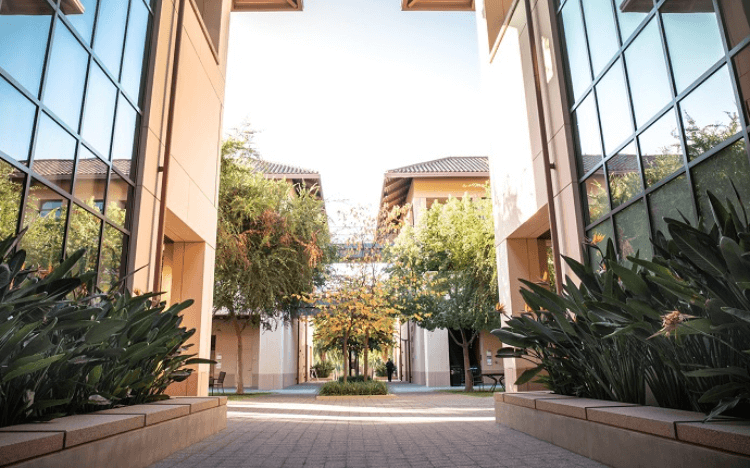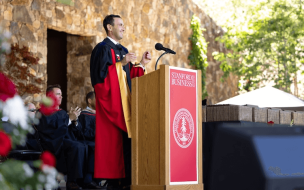US schools dominate the global list that is coveted by MBA applicants as a means to compare and contrast schools. Stanford GSB, Wharton, Harvard, MIT Sloan, Chicago Booth, UC Berkeley Haas, Columbia, Kellogg, and Virginia Darden lead the list, in that order.
IMD, in Switzerland, is the only non-US school to be ranked among the top-10, and only two other European schools are in the top-25—London Business School, and INSEAD.
US schools have suffered dropping application volumes for the past four consecutive years, according to data from the Graduate Management Admission Council. And the falloff has been dramatic among the two-year, full-time MBA courses, the flagship US business degrees.
But the new Bloomberg ranking...
The 25,523 business students and alumni surveyed by Bloomberg in 2018 about their goals and experiences overwhelmingly rated compensation as their top factor in choosing a business school. So Bloomberg gives the potential for high-paying work after graduation top weighting in its rankings methodology. Networking, learning, and entrepreneurship make up the rest of the league table.
Stanford won by a wide margin: it’s overall score of 100 was more than Wharton’s 92.6 score. Stanford scored a perfect 100 on compensation (salary), networking, and entrepreneurship. Its MBA students benefit from Stanford’s location, in the heart of Silicon Valley, providing direct access to many of the world’s top tech companies, investors, and startups.
USA is where the money is
Why do US MBA graduates make so much more money than their peers elsewhere around the world? Because they tend to take jobs in America, where compensation is the highest globally, according to the 2018 GMAC Corporate Recruiters Survey.
In addition, signing bonuses are more common in the US than in other markets, and this was factored into Bloomberg’s ranking. GMAC data show that 56% of US employers offer 'golden hellos' worth $10,500 on average, whereas only 36% of Asia Pacific companies, 30% of Latin American firms, and 20% of European businesses offer these bonuses.
While US graduates make the most on graduation, they pay dearly for the privilege. The tuition, living, travel, and other costs for a top two-year US MBA will set you back over $200,000 in total—not including forgone salary.
In comparison, because European MBA programs are generally just a year long, they are often considerably cheaper, as students give up less in salary. So it is often European schools that offer the best bang for your buck, and this, along with the cost of living, is the main reason why candidates apply to non-US schools, according to GMAC.
Bloomberg also provided regional rankings for non-US business schools. In Asia Pacific, CEIBS topped the list; for Canada is was the Ivey School of Business; Europe’s top schools after IMD, LBS and INSEAD, are IESE of Spain, and the UK’s Cambridge Judge.
While non-US schools cannot match American’s mighty compensation, some performed well in other areas. For instance: ESADE Business School of Spain placed sixth in the entrepreneurship index, ahead of many of the top US schools, including Harvard, Booth, and Wharton. So it is important for MBA applicants to understand what they want from the degree, and pick a school that best matches their goals.
International applications down
The promise of a high-paying job at a top American company has lured international MBA students to the top US schools for decades, which rely on them to enrich the diversity of their classrooms.
But this has become more difficult, with fewer employers planning to hire foreign MBAs this year than in 2017. Some business school administrators have blamed visa issues and the negative immigration rhetoric of Donald Trump's administration.
This is one of the main reasons for the drop in applications to the top US business schools this past year; the fall in demand from international candidates has been the steepest. Applications from all candidates to Stanford GSB fell 4.6%, while at Harvard Business School the drop was 4.5%.
Though, we should note, more international US business school students now see America as a stepping stone to jobs back in their home countries, GMAC data shows.
Because of the US’s disruptive political environment, non-US schools may pick up some of the international applicants who are no longer considering America for their MBA. Business schools in Asia Pacific, Canada, and Europe have already seen surges in application volume over the past year, according to GMAC figures.
So America’s dominance of the Bloomberg ranking, and others, while assured at the moment, may look (slightly) less so in future years.
Register for free to continue reading
RECAPTHA :
5a
c7
0b
3e











The best of our Premium Articles